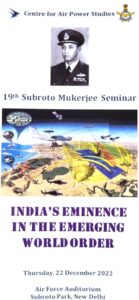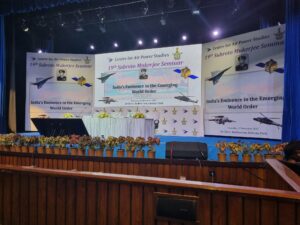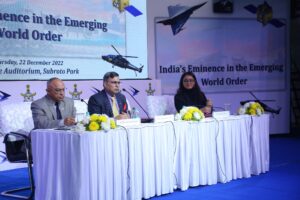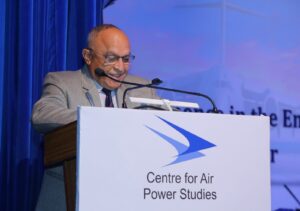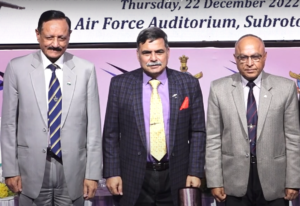
Theme
“The Runway to a Billion Opportunities”
- Has Aero India come of age?
-
- Yes
-
- From a humble beginning in 1996 to the fourteenth show this year.
-
- From an airshow it has transformed into a massive business opportunity.
-
- It is the biggest air show in Asia and at par with air shows across the world.
-
- 800+ companies participating (700 Indian and about 110 foreign).
-
-
Visit and participation of Defence Ministers of 32 countries, Air Chiefs of 29 countries and 73 Chief Executive Officers of global and Indian original equipment manufacturers.
-
-
-
About five lakh visitors are expected to attend the event in person and millions more will connect through television and the internet.
-
-
- All the major defence equipment producers of the world are taking part.
-
-
The major exhibitors include Airbus, Boeing, Dassault Aviation, Lockheed Martin, Israel Aerospace Industry, BrahMos Aerospace, Army Aviation, HC Robotics, SAAB, Safran, Rolls Royce, Larsen & Toubro, Bharat Forge Limited, Hindustan Aeronautics Limited (HAL), Bharat Electronics Limited (BEL), Bharat Dynamics Limited (BDL) and BEML Limited, the statement read.
-
2. What is different this year from previous shows.
- Last year participation was restricted and much lesser due to the Pandemic. This year it is on a much larger scale.
- India’s thrust is on “Atmanirbharta / Self-reliance / Make in India”.
- The emphasis is on:-
-
- Make in India.
-
- Enhancing export.
-
- Joint ventures and co-production.
-
- Technology transfer.
-
- Make for the world (India as a cheaper and better option).
- Foreign companies are also making their offers and sales pitch with this in mind.
- The Indian displays (Air display, static display and stalls) are showcasing Indigenous platforms, systems and weapons.
3. What is the aim and focus of this year’s airshow?
- To promote self-reliance in defence production.
- Accelerate the process of transformation from biggest defence importer to arms exporter (according to media reports already exporting defence equipment to 75 countries).
- Showcase and promote India as a manufacturing hub.
- The focus is on forging partnerships with foreign companies, in line with the ‘Make in India, Make for the World’ vision.
- The event aims to integrate domestic MSMEs and startups in the global supply chain and attract foreign investments including partnerships for co-development and co-production.
- The focus is to display indigenous equipment/technologies.
- The event aims to promote the export of indigenous air platforms like Light Combat Aircraft (LCA)-Tejas, HTT-40, Dornier Light Utility Helicopter (LUH), Light Combat Helicopter (LCH) and Advanced Light Helicopter (ALH).
Expectation
Conclusion of 250+ MoUs (worth ₹75,000 crores) is expected to be finalised during Aero India 2023.
More coming up…..
Suggestions and value additions are most welcome
For regular updates, please register here
References and credits
To all the online sites and channels.
Disclaimer:
Information and data included in the blog are for educational & non-commercial purposes only and have been carefully adapted, excerpted, or edited from sources deemed reliable and accurate. All copyrighted material belongs to respective owners and is provided only for purposes of wider dissemination.

